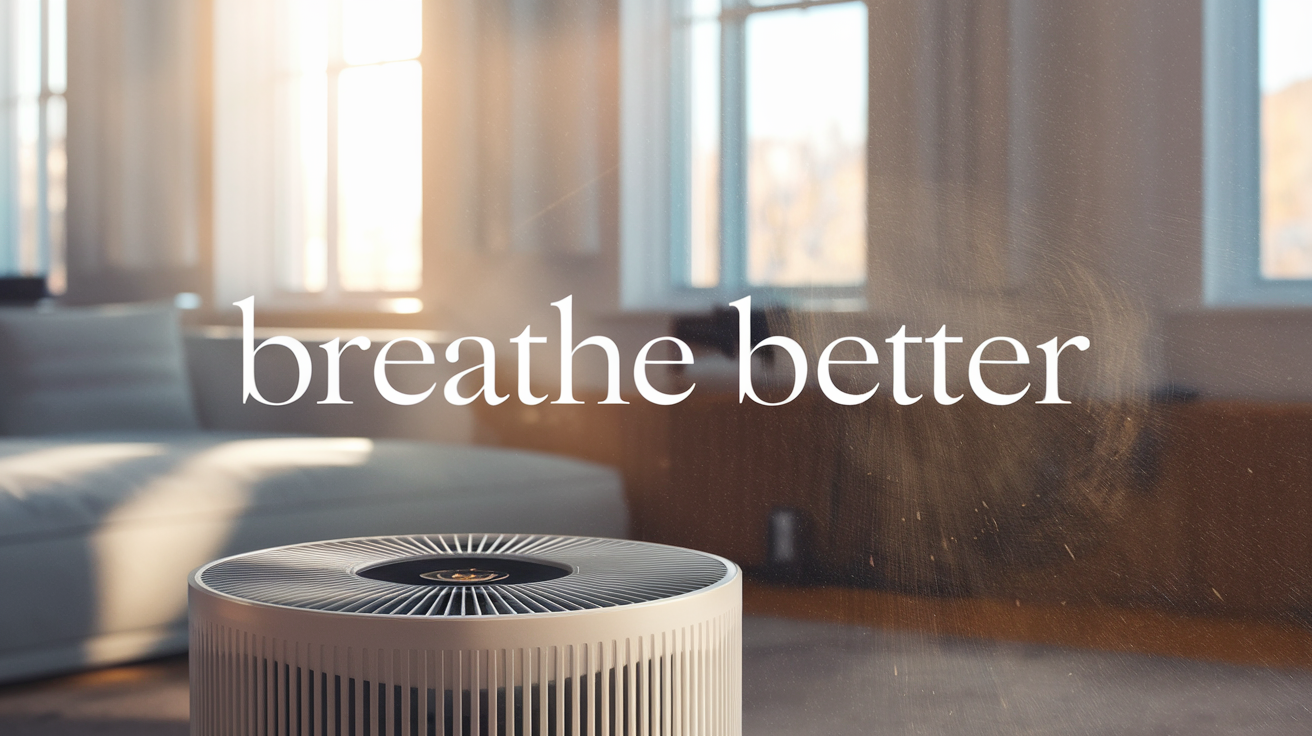Breathe Better: Top Air Purifiers
Are you tired of sneezing, coughing, and dealing with allergies every time you step into your home? 🤧 The air you breathe might be the culprit. With indoor air pollution often being 2-5 times worse than outdoor air, it’s time to take control of your home’s atmosphere.
Enter the world of air purifiers – your ticket to cleaner, fresher air and better health. But with so many options flooding the market, how do you choose the right one? Whether you’re battling pet dander, pollen, or just want to breathe easier, we’ve got you covered. In this guide, we’ll explore the top air purifiers that can transform your living space into a breath of fresh air.
From understanding the basics of air purification to selecting the perfect purifier for your needs, we’ll walk you through everything you need to know. Get ready to discover the best air purifiers, learn how to maintain them, and explore complementary strategies for optimal air quality. Let’s clear the air and breathe better together! 💨✨
Understanding Air Purifiers
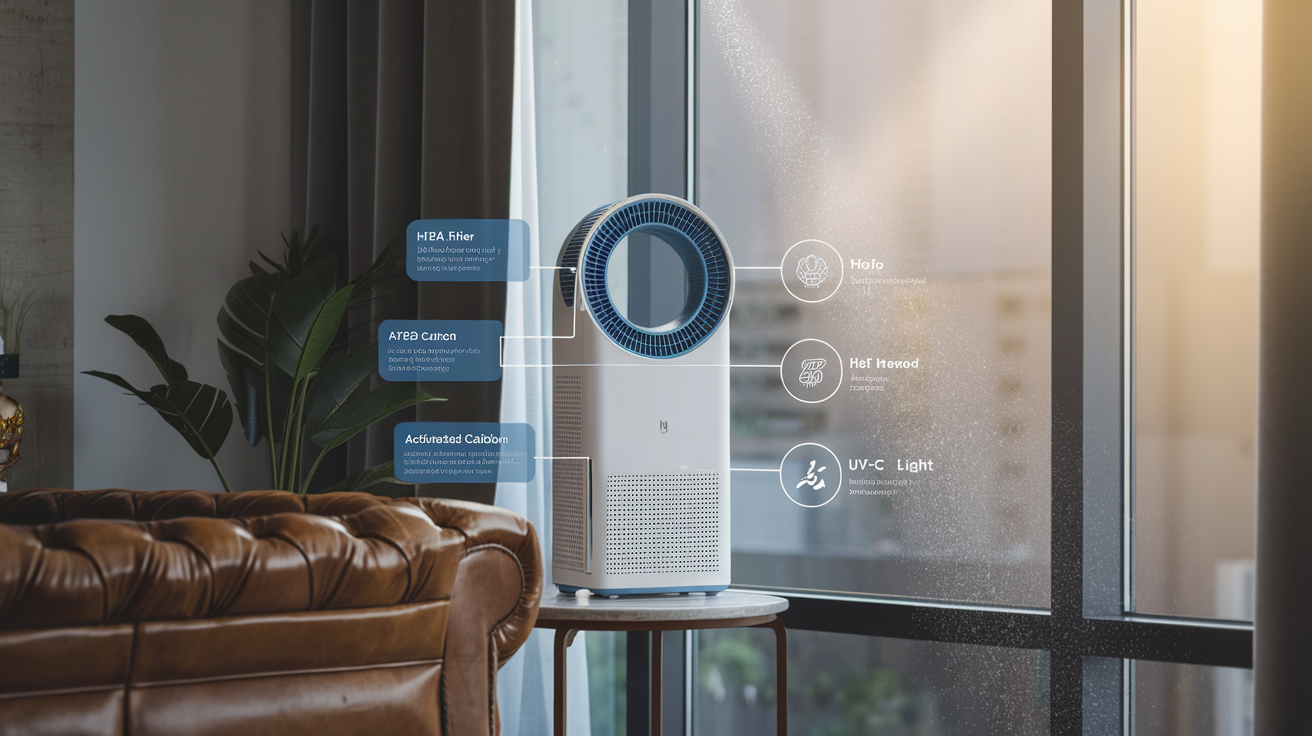
How air purifiers work
Air purifiers function by drawing in air through a series of filters, trapping pollutants, and releasing cleaner air back into the room. The process typically involves:
- Pre-filter: Captures large particles
- HEPA filter: Removes microscopic particles
- Activated carbon filter: Absorbs odors and gases
- Optional UV-C light: Kills bacteria and viruses
| Filter Type | Particle Size Removed | Efficiency |
|---|---|---|
| Pre-filter | > 10 microns | 80-90% |
| HEPA | 0.3 microns | 99.97% |
| Carbon | Molecular level | Varies |
Benefits of using air purifiers
Air purifiers offer numerous advantages for indoor air quality and health:
- Reduce allergens (pollen, dust mites, pet dander)
- Eliminate smoke and odors
- Remove airborne bacteria and viruses
- Improve sleep quality
- Alleviate asthma and allergy symptoms
Key features to look for
When selecting an air purifier, consider these essential features:
- CADR (Clean Air Delivery Rate): Measures efficiency
- Room size coverage: Ensure it’s suitable for your space
- Noise level: Look for quiet operation
- Filter replacement indicators: For easy maintenance
- Energy efficiency: ENERGY STAR certified models
- Smart features: Wi-Fi connectivity, air quality sensors
Air purifiers with these features can significantly improve indoor air quality, providing a healthier living environment. As we explore the top air purifiers for different needs in the next section, keep these key features in mind to help you make an informed decision.
Top Air Purifiers for Different Needs
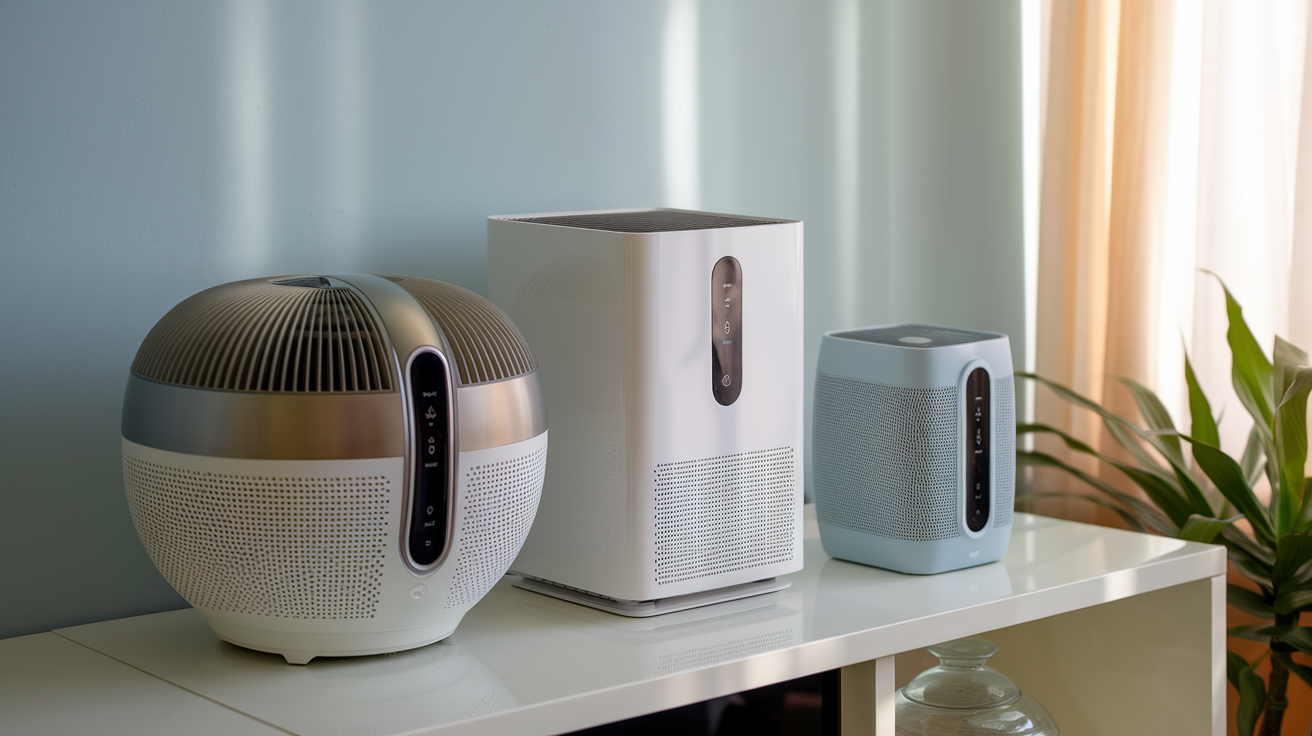
A. Best for allergies
For those battling allergies, the right air purifier can be a game-changer. Look for models with True HEPA filters, which can capture 99.97% of particles as small as 0.3 microns, including common allergens like pollen, dust mites, and pet dander.
Top picks for allergy sufferers:
- Honeywell HPA300
- Coway AP-1512HH Mighty
- Blueair Blue Pure 211+
| Feature | Honeywell HPA300 | Coway AP-1512HH | Blueair Blue Pure 211+ |
|---|---|---|---|
| CADR | 300 | 246 | 350 |
| Coverage | Up to 465 sq. ft. | Up to 361 sq. ft. | Up to 540 sq. ft. |
| Noise | 63 dB (max) | 53.8 dB (max) | 56 dB (max) |
B. Ideal for pet owners
Pet owners face unique air quality challenges. Opt for purifiers with strong odor control and the ability to capture pet hair and dander effectively.
C. Effective against smoke and odors
For smokers or those living in areas prone to wildfires, air purifiers with activated carbon filters are essential. These filters excel at removing smoke particles and neutralizing odors.
D. Budget-friendly options
You don’t have to break the bank for cleaner air. Several affordable options offer good performance for smaller spaces or specific needs.
E. Smart air purifiers
For tech enthusiasts, smart air purifiers offer convenience and advanced features like app control, air quality monitoring, and integration with home automation systems.
Choosing the Right Air Purifier
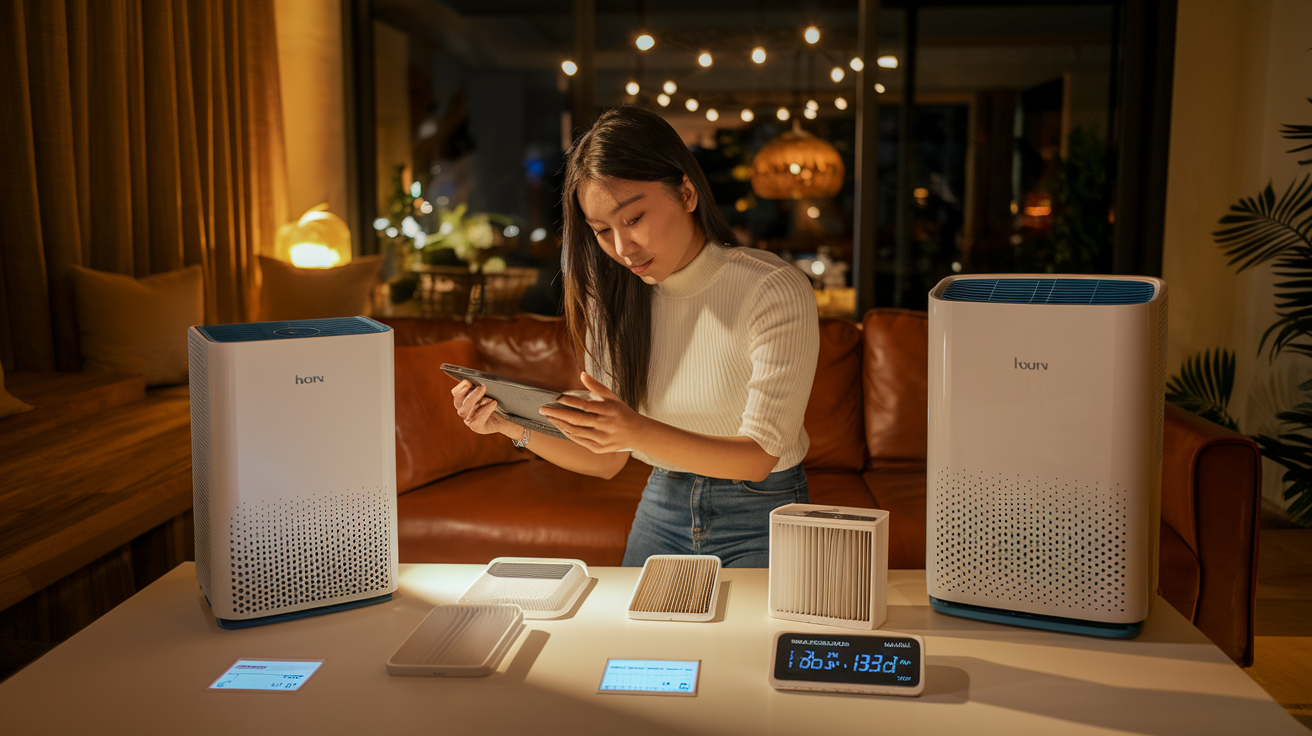
Room size considerations
When selecting an air purifier, room size is a crucial factor to consider. The effectiveness of an air purifier depends on its ability to clean the air in a given space. Here’s a quick guide to help you choose the right size:
| Room Size (sq ft) | Recommended CADR |
|---|---|
| Up to 250 | 100-150 |
| 251-400 | 150-200 |
| 401-600 | 200-300 |
| 601+ | 300+ |
Remember, it’s better to choose a slightly larger capacity than your room size to ensure optimal air cleaning.
Filtration technology comparison
Different air purifiers use various filtration technologies. Here are the most common types:
- HEPA filters: Capture 99.97% of particles as small as 0.3 microns
- Activated carbon filters: Absorb odors and gases
- UV-C light: Kills bacteria and viruses
- Ionizers: Release charged particles to attract pollutants
Consider combining multiple technologies for comprehensive air purification.
Noise levels and operation modes
Air purifiers can vary significantly in noise levels. Look for models with:
- Multiple fan speeds
- Sleep or night mode for quiet operation
- Automatic mode that adjusts based on air quality
Energy efficiency ratings
To minimize energy consumption, consider:
- ENERGY STAR certified models
- Programmable timers
- Smart features that optimize operation
By carefully evaluating these factors, you can choose an air purifier that best suits your specific needs and environment.
Maintaining Your Air Purifier
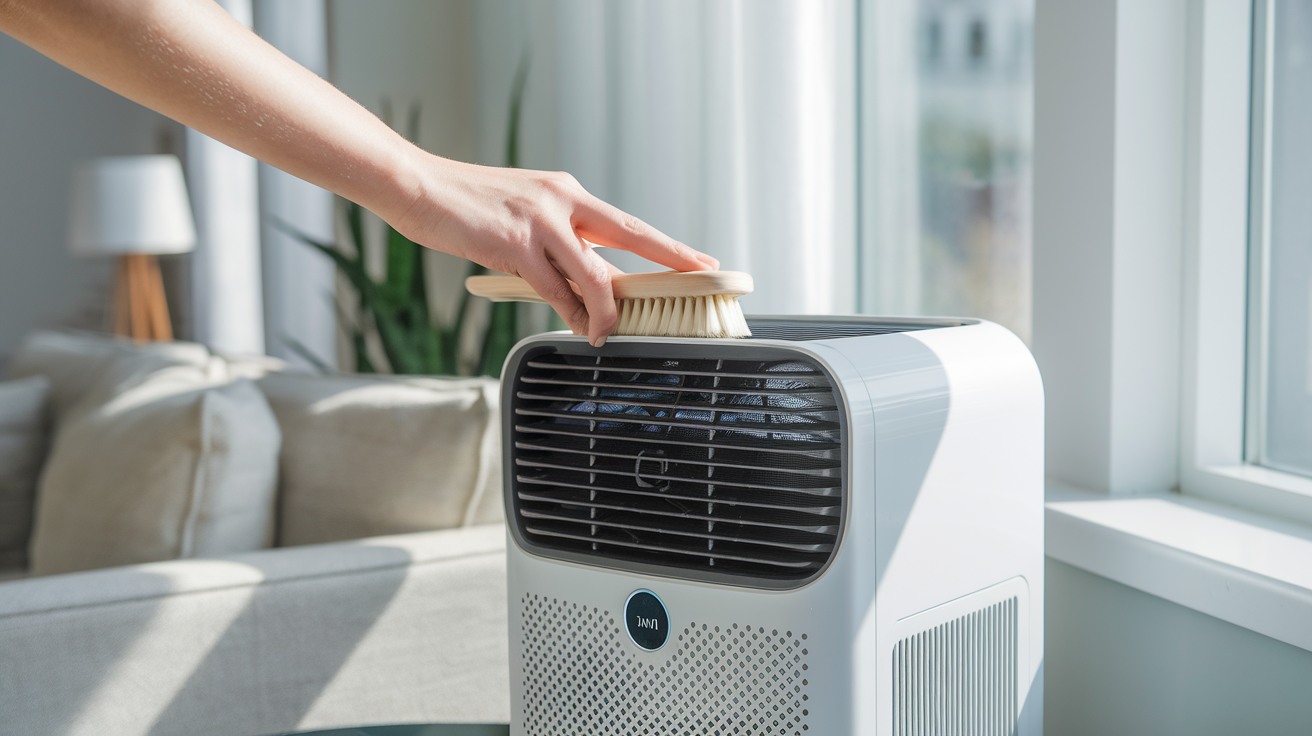
Filter replacement schedule
Regular filter replacement is crucial for maintaining your air purifier’s effectiveness. Here’s a general schedule to follow:
| Filter Type | Replacement Frequency |
|---|---|
| HEPA | Every 6-12 months |
| Carbon | Every 3-6 months |
| Pre-filter | Every 3 months |
However, these timelines may vary depending on usage and air quality. Always consult your device’s manual for specific recommendations.
Cleaning and care tips
To keep your air purifier running smoothly:
- Vacuum the exterior weekly
- Wipe down the unit with a damp cloth monthly
- Clean the pre-filter every 2-4 weeks
- Check and clean air intake vents regularly
- Keep the area around the purifier clear of obstructions
Maximizing performance
Optimize your air purifier’s efficiency with these strategies:
- Place the unit in high-traffic areas
- Run it continuously for best results
- Close windows and doors while in use
- Adjust fan speed based on air quality
- Use the correct size purifier for your room
By following these maintenance and optimization tips, you’ll ensure your air purifier continues to provide clean, fresh air for years to come. Next, we’ll explore additional strategies to complement your air purification efforts and further improve your indoor air quality.
Beyond Air Purifiers: Complementary Strategies

Improving indoor air quality
While air purifiers are effective, other strategies can significantly enhance your indoor air quality:
- Regular cleaning and dusting
- Using non-toxic cleaning products
- Proper ventilation
- Controlling humidity levels
Here’s a comparison of these strategies:
| Strategy | Effectiveness | Cost | Ease of Implementation |
|---|---|---|---|
| Regular cleaning | High | Low | Moderate |
| Non-toxic products | Medium | Low-Medium | Easy |
| Proper ventilation | High | Low-Medium | Easy |
| Humidity control | Medium | Medium | Moderate |
Natural air-purifying methods
Nature offers several ways to purify air:
- Air-purifying plants (e.g., Spider Plant, Peace Lily)
- Beeswax candles
- Salt lamps
- Activated charcoal
These methods can complement your air purifier, creating a more holistic approach to air quality management.
Combining air purifiers with other solutions
For optimal results, integrate air purifiers with other air-quality improving techniques:
- Use air purifiers in conjunction with HVAC filters
- Combine air purifiers with dehumidifiers in humid climates
- Pair air purifiers with regular house plants for enhanced air cleaning
By adopting a multi-faceted approach, you can create a healthier, cleaner indoor environment. Remember, while air purifiers are powerful tools, they work best as part of a comprehensive air quality strategy.
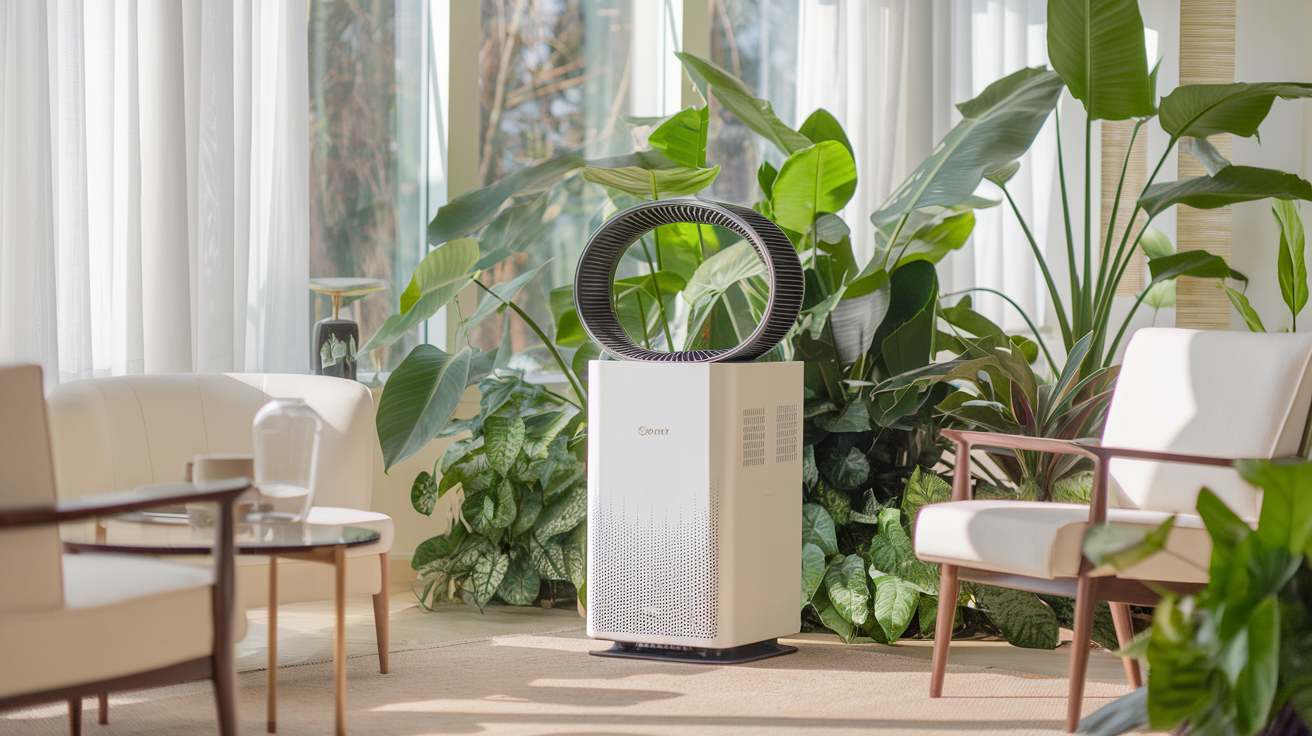
Clean air is essential for our health and well-being, and investing in a quality air purifier can make a significant difference in your indoor environment. From understanding the basics of air purification to exploring top-rated models for various needs, this guide has equipped you with the knowledge to make an informed decision. Remember to consider factors such as room size, specific pollutants, and maintenance requirements when choosing the right air purifier for your home.
While air purifiers are powerful tools for improving air quality, they work best as part of a comprehensive approach to indoor air management. Combine your air purifier with regular cleaning, proper ventilation, and other air-quality strategies to create the healthiest possible living space. By taking these steps, you’ll be breathing easier and enjoying the benefits of cleaner air in no time.

